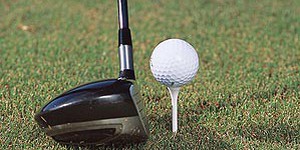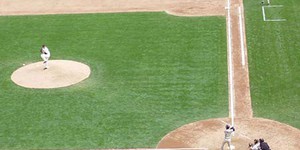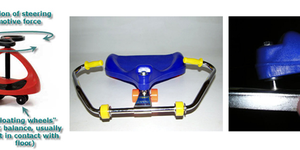Sports Science Science Projects (57 results)
Top athletes and coaches use a whole lot of science and engineering to improve performance and increase the chances of winning. Technologies like better tennis rackets, sleeker running and swimming outfits, and aerodynamic soccer balls, mean that current athletes are breaking world records left and right. Add to that better nutrition and science-based training regimes and you have an era of amazing athletes! Explore how science and engineering impact your favorite sport.
|
Select a resource
Sort by
|
If you're an avid golfer, this might be a fun project for you. When you're setting up to tee off out on the course, how much attention do you pay to putting the tee in the ground? The height of the tee can affect both where in the swing the club makes contact and where on the clubface the ball makes contact. Are you placing your tees at the right height to get the most distance from your swing?
Read more
Featured
Have you heard that garlic powder is supposed to inhibit the growth of bacteria? Which do you think would make a better disinfectant: a solution of garlic powder or a solution of bleach? This project shows you a straightforward way to compare the effectiveness of different disinfectants (or other antimicrobial agents), by measuring zones of inhibition on a culture plate.
Read more
Here's a sports science project that shows you how to use correlation analysis to choose the best batting statistic for predicting run-scoring ability. You'll learn how to use a spreadsheet to measure correlations between two variables.
Read more
Have you ever ridden on a Roller Racer® or PlasmaCar®? These are ride-on toys that you move ahead by moving the steering mechanism back and forth. You've probably seen skateboarders "slaloming" on level ground to keep rolling, it's basically the same idea. This project explores the physics behind this method of locomotion.
Read more
The rebound rating is the ratio of the height the ball bounces to, divided by the height the ball was dropped from. Use the rebound rating to measure the bounciness of new tennis balls vs. balls that have been used for 10, 20, 50, and 100 games. Another idea to explore: does it matter what type of court the ball is used on? (See: Goodstein, 1999, 63-64.)
Read more
Do you ever feel like you need to move your legs faster than your parents do just to keep up with them? This could be because of the difference in leg length between you and your parents. How many more steps do you need to take compared to your parents to walk down the block? Can you use a walking test to determine how tall a person is? This science project will help you find out! You can even use your phone and a sensor app to record the steps and determine the pace.
Read more
Tennis racquets, baseball bats and golf clubs all vibrate when they hit the ball. You can often feel it in your hands, particularly if you "mis-hit" the ball. You can find the point(s) on your racquet, bat or club—called the "sweet spot"—that minimize unwanted vibrations. Low-tech method: hang the racquet or bat straight up and down with a string from its handle. Lightly hold the handle with your thumb and forefinger and have a helper sharply tap the bat, strings or club face…
Read more
Think of hitting a baseball, heading a soccer ball into the net, or hitting a tennis ball with a racquet. Where the ball goes depends on...what? You can set up a simple model to start your investigation. You'll need a marble, a flat piece of wood, a flat piece of cardboard, a pencil, a ruler, a protractor, and a level surface. Lay down the cardboard down on a level surface and set up the flat piece of wood at one edge. The wood will act like a wall, and you're going to roll the marble at…
Read more
Have you ever seen a skateboarder jump over an obstacle or slide down a railing? It looks like they are defying the laws of physics when they perform these tricks. It looks like it, but that's not the case. Physics describes the motion of objects and it is a skateboarder's best friend! All of these tricks can be explained by physics. In this sports science fair project, you will learn how speed affects "popping an ollie." The ollie is a basic skateboarding trick, and it's the first step to more…
Read more
Watching professional racing-car drivers compete can be thrilling. The high speeds that racing cars can reach — up to 200 miles per hour (mph) and more! — put some unique demands on the vehicles. For example, to withstand high temperatures, the tires must be inflated with nitrogen gas, instead of air as with normal car tires. This enables the drivers to have better control over steering their cars as they race around the track. In this sports science project, you will inflate…
Read more
Place a desk chair (one that rotates easily on ball bearings) in the center of the room, away from any obstructions. Put your hands on your lap and have a helper give you a push to start you rotating. You'll need to quantify the results somehow. For example, your helper could measure the number of revolutions you make in 5 seconds. Now try extending your arms after your helper starts you spinning. Next, start with your arms out, and bring them in close to your body after you start…
Read more
|
Explore Our Science Videos
Bottle Rocket Parachutes
Gingerbread House STEM Challenge
Make Your Own Lava Lamp










